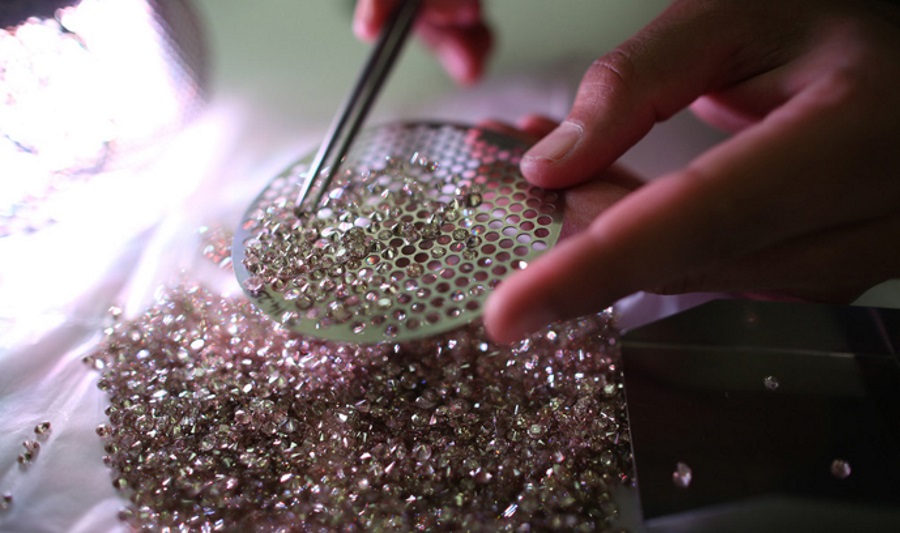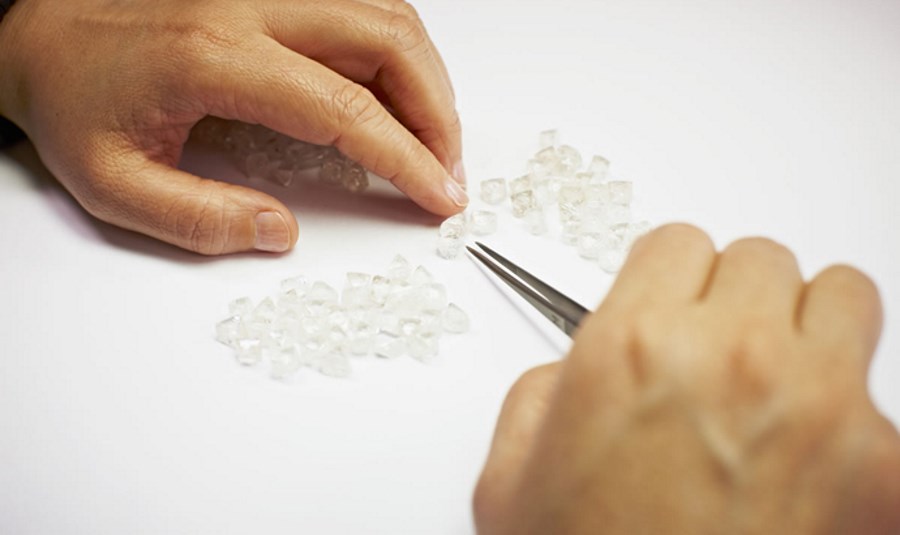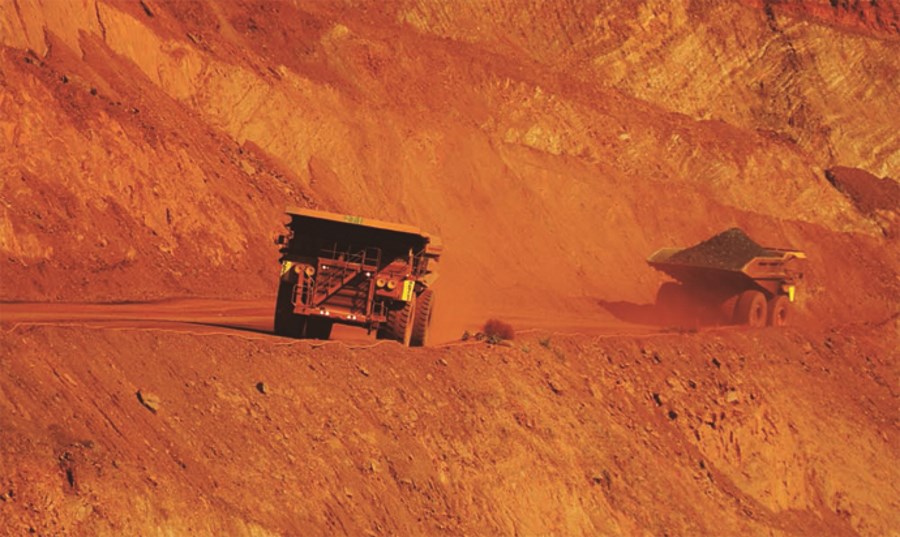Five reasons why diamond mining stocks have been under pressure

From February 15th to March 13th, a market-cap weighted aggregation of diamond miners in U.S. dollars including ALROSA Joint-Stock Company (RTS: ALRS), Petra Diamonds Ltd (LSE: PDL), Dominion Diamond Corp (TSX, NYSE: DDC), Gem Diamonds Ltd (LSE: GEMD), Lucara Diamond Corp (TSX: LUC), Stornoway Diamond Corp (TSX: SWY), Firestone Diamonds Plc (LSE: FDI), and Mountain Province Diamonds Inc (TSX, NASDAQ: MPVD), was down 14.3%.
During the same time period, the S&P 500 (the U.S. broad market proxy) was up 1.1% and notably made an all-time high on March 1st. The FTSE 100 (the European broad market proxy) was up 1.0% and also made an all-time high on March 1st.
On February 24th Stornoway hit a 52-week low of C$0.81, through March 2nd Dominion shares were down 10 days in a row, and on March 8th Mountain Province made a 52-week low of C$4.51. From February 15th to March 13th, $1.8B was erased from ALROSA’s market cap, a 14.1% decline.

Sorting of Karowe diamonds in Botswana. Source; Lucara Diamond Corp
The recovery of the diamond industry last year following the 2015 indigestion, a strong post-election U.S. economy, and a more stable Chinese economy, are all fundamentals supportive of diamond miners, but the stocks have recently displayed weakness.
Here are some thoughts as to why:
1. The effect of India’s demonetization has been felt in diamond miner’s Q4 2016 reports which have come out in recent weeks
While the market expected India’s demonetization to have a negative impact on global diamond prices, recently released official sales results from Dominion, Stornoway, and Mountain Provence have highlighted the severity of the impact on smaller, lower-quality stones.
On February 22nd, Dominion released that in the three months ending January 31, 2017, diamonds from its primary mine, Ekati, only sold for $77/ct, versus $175/ct during the same period a year ago. In the recent quarter, 90% of Ekati’s diamonds came from the Misery Main pipe, which is rich in diamond quantity but poor in diamond quality, versus a year ago when more carat volume came from Ekati’s Koala pipe which produces diamonds that are typically worth 3-4x that of Misery Main. That said, Misery Main diamonds probably would have sold for closer to $100/ct without the effect of the demonetization.
In Stornoway Diamond’s first ever sale, which was held in November of last year, the company achieved an average price per carat of $185, but noted that the price was skewed higher because lower quality diamonds were withheld from sale due to a lack of demand. On February 6th, the company released 2017 diamond price guidance of $100-132/ct (inclusive of lower quality stones), which is $30-60/ct below the mine plan diamond price.
In addition, Stornoway noted diamond breakage from processing, which further increased the distribution of smaller diamonds produced by the company.

Haul truck at the Ekati diamond mine in Canada. Source: Dominion Diamond Corp
Mountain Province held its first ever diamond sale from January 16-25, and realized an average price per carat of $127/ct, although the company was only able to sell 75% of its offering, as lower-quality, notably brown colored stones, did not sell. The demonetization impacted the company’s average price achieved by an estimated 20-30%.
On March 7th, Mountain Province released that it sold all diamonds that were offered at it’s second sale, which was held in February, including those that did not sell in the first tender, however the company did not disclose the average selling price.
2. Lucara gave a bearish view of the diamond market in its Q4 2016 operations update released on February 16th
On February 16th, Lucara said “Supply and demand fundamentals in the diamond market remain unbalanced, resulting in a very cautious market. The large volume of rough diamonds sold into the market in 2016 has not translated into increased sales of polished diamonds. Polished diamond price indices remain at very low levels, restricting the ability for rough diamond prices to see short term and sustainable growth.
Demonetization in India towards the end of 2016 resulted in low to almost no liquidity for polishers to pay their employees. Although this is a short term concern for the sector, additional supply being brought into the market by three new diamond producers may continue to have an impact on prices for the smaller and lower quality rough diamonds.”

Sorting Ekati diamonds. Source: Dominion Diamond Corp
After recovering the second largest rough diamond in history in 2015, the subsequent publicity has made Lucara one of the most well followed and most recognizable diamond miners in the world. Post Lesedi La Rona discovery, Luacara’s comments have impacted industry sentiment more so than larger company’s like ALROSA and Petra, which have both recently released more bullish views on the current state of the diamond market.
3. The U.S. Federal Reserve is likely to raise interest rates multiple times this year, which makes bonds a more competitive alternative to dividend yielding stocks
With a high likelihood of the U.S. Federal Reserve raising interest rates on March 15th, with subsequent additional hikes in 2017 also expected, there has been some rotation out of higher yielding stocks into fixed income.
With Dominion, Lucara, and ALROSA, yielding 4.3%, 3.6%, and 2.4%, respectively, which compares to the S&P 500 yielding 2.2%, these diamond miners are relatively high yielding stocks, and are sensitive to asset class rotation tied to interest rates.
In addition, more hawkish monetary policy rhetoric has strengthened the U.S. dollar, which has also put pressure on the diamond miners, most of which are traded in non-U.S. dollars.
4. There has been a general rotation out of commodity investments as iron ore, gold, and oil have been driven lower by weaker sentiment in recent weeks
After surging an 80% in 2016, iron ore is expected to be weaker in 2017 as a higher price, which was driven by government stimulated Chinese steel production, has led to global production capacity expansion. On February 21st, the largest diversified miner in the world, BHP Billiton (ASX: BHP), expressed caution “the (iron ore) market is likely to come under pressure in the short-term from moderating Chinese steel demand growth, high port inventories and incremental low cost supply.”

Haul truck at iron ore mine in western Australia. Source BHP Billiton
Since the beginning of March, gold is down 3.7% as a pending Fed rate raise depressed the demand for gold as an inflation hedge. In addition, the desire to own gold as a safe haven has decreased as the market has grown more comfortable with the uncertainly related to the Trump administration taking office.
WTI crude oil has sold off 11.1% since the beginning of March as the rally in December, driven by an OPEC supply curtailment announcement, has given way to concern over increased U.S. shale oil production.
Large investors tend to move money in-and-out of asset classes and sectors as a whole, so a general flowing of money out of commodities and related stocks in recent weeks has sympathetically impacted the diamond miners.
5. Negative sentiment driven by the Economist’s February 23rd article titled “The Waning Power of the Engagement Ring”
Widely-read global-financial publication, The Economist, recently published an article on how the “velben good” nature of diamonds is eroding. The article points to De Beers no longer controlling supply, the technological advancement of synthetic diamond production, and the Millennial’s lackluster desire for material possessions, as threatening the value of diamonds.
While all of these topics are far from new to those in the industry, the widely-distributed article put a negative spin on the longer-term prospects of the diamond industry.
At the time of writing Paul Zimnisky held a long position in Dominion Diamond Corp.
Paul Zimnisky is an independent diamond industry analyst and consultant. He can be reached at paul@paulzimnisky.com, and followed on Twitter @paulzimnisky
More News
Rio Tinto, Founders Factory’s Mining Tech Accelerator invests in startups from US and OZ
April 23, 2025 | 04:02 pm
{{ commodity.name }}
{{ post.title }}
{{ post.date }}



Comments